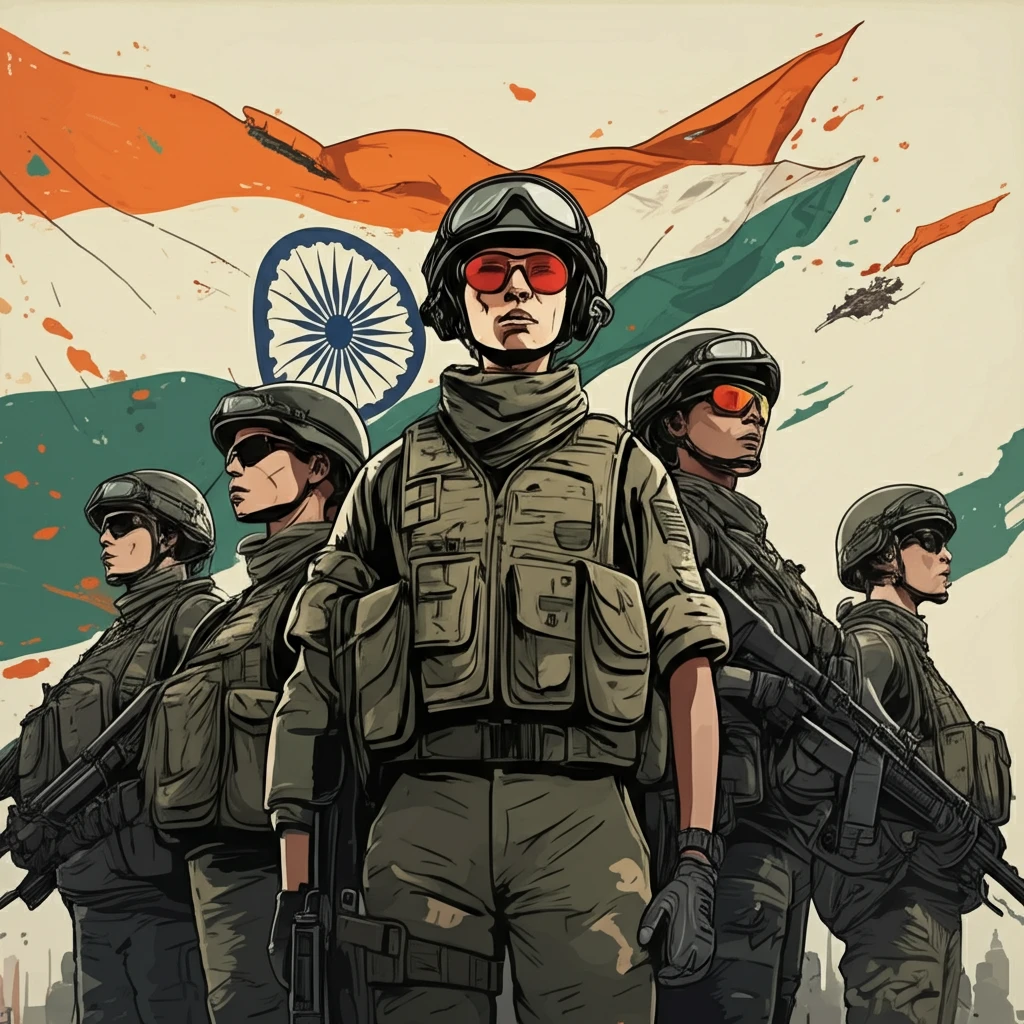
Breaking Barriers: How Inclusive HR Policies Transform the Indian Army
"Explore the groundbreaking impact of HR policies on gender inclusion within the Indian Army, fostering a more diverse and equitable environment."
In today's rapidly evolving world, the importance of a diverse and inclusive workforce cannot be overstated. Organizations across the globe are recognizing that a gender-inclusive environment not only fosters a sense of belonging and respect but also significantly contributes to improved performance and innovation. The Indian Army, a traditionally male-dominated institution, is no exception to this transformative shift. As it navigates the complexities of modern warfare and strives to reflect the values of a progressive society, the integration of women into its ranks has become a paramount objective.
This article delves into the impact of Human Resources (HR) policies on gender inclusion within the Indian Army, examining how strategic initiatives are breaking down barriers, challenging stereotypes, and creating opportunities for women to excel in various roles. By analyzing empirical data and drawing insights from relevant literature, we aim to shed light on the progress made, the challenges that remain, and the potential for further advancements in fostering a truly inclusive environment.
The focus will be on understanding the specific HR policies that are driving change, assessing their effectiveness, and identifying areas for improvement. From recruitment and training to career development and leadership opportunities, we will explore the multifaceted approach required to ensure that women in the Indian Army are not only present but also empowered, valued, and respected.
Why Gender Inclusion Matters: The Strategic Advantage

A gender-inclusive workforce is no longer just a matter of social responsibility; it's a strategic imperative. Numerous studies have demonstrated that organizations with diverse teams are more innovative, adaptable, and resilient. In the context of the Indian Army, gender inclusion can bring a wealth of perspectives, skills, and approaches to problem-solving, ultimately enhancing its operational effectiveness and strategic capabilities.
- Enhanced Innovation: Diverse teams bring a wider range of perspectives and ideas to the table, leading to more creative solutions and innovative approaches.
- Improved Decision-Making: Inclusive teams are better equipped to analyze complex situations, consider diverse viewpoints, and make informed decisions.
- Increased Adaptability: A gender-inclusive workforce is more adaptable to changing circumstances and better able to respond to evolving threats and challenges.
- Stronger Cohesion: An inclusive environment fosters trust, collaboration, and mutual respect, leading to stronger team cohesion and a greater sense of belonging.
- Enhanced Reputation: Organizations that prioritize gender inclusion are more attractive to top talent and are viewed more favorably by the public.
Looking Ahead: The Future of Gender Inclusion in the Indian Army
While significant progress has been made in promoting gender inclusion within the Indian Army, there is still work to be done. Challenges remain in areas such as combat roles, leadership representation, and cultural biases. By continuing to prioritize inclusive HR policies, fostering a supportive environment, and challenging traditional norms, the Indian Army can pave the way for a truly equitable and diverse future.
